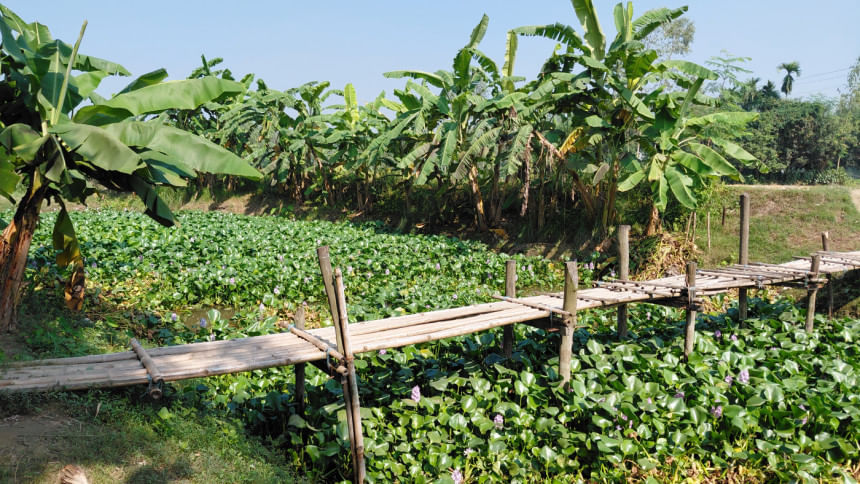Alaikumari river in Rangpur on the brink of extinction

Rangpur's Alaikumari River, once known for its clear, flowing waters that sustained riverside life, now ranks among the most endangered rivers in the region. Over time, it has deteriorated into a lifeless canal -- choked by encroachment, heavy siltation, and unchecked cultivation.According to the Bangladesh Water Development Board (BWDB), the "endangered" Alaikumari river stretches around 26 kilometres across Rangpur district. It originates in the lowlands of Kalyani union under Rangpur Sadar up...
Rangpur's Alaikumari River, once known for its clear, flowing waters that sustained riverside life, now ranks among the most endangered rivers in the region. Over time, it has deteriorated into a lifeless canal -- choked by encroachment, heavy siltation, and unchecked cultivation.
According to the Bangladesh Water Development Board (BWDB), the "endangered" Alaikumari river stretches around 26 kilometres across Rangpur district. It originates in the lowlands of Kalyani union under Rangpur Sadar upazila and flows into the Ghaghot river in Pirgachha upazila.
Previously, the river's average width was about 45 metres, but in many places, it has now shrunk to just 10–15 metres.
Rabiul Islam, executive engineer of the Rangpur Water Development Board, said, "We have started identifying and restoring the rivers of Rangpur. However, we often face resistance from illegal occupiers. Still, we are doing our best. The important rivers must be saved at any cost."
Locals, however, say the river is dying before their eyes.
Eighty-six-year-old Jagadish Chandra Barman of Kalyani village recalled, "My childhood memories are tied to the Alaikumari river. Back then, there was current in the river, and it had water all year round. Now, it feels like a dead canal. People are cultivating on the riverbed."
"If the Alaikumari is not saved, our environment, biodiversity, and agriculture will all be at risk," he added.
Another elderly villager, 78-year-old Nasiat Ullah, said, "We used to spend our afternoons sitting on the banks of the Alaikumari. Now, there are only crop fields. I fear the next generation will only hear its name but never see the river itself."
Sobhan Mia, a 55-year-old farmer, expressed regret over how roads built across the river have disrupted its natural flow, causing it to dry up completely during the dry season.
"During the monsoon, you may see some water, but it completely dries up in the dry season. People cultivate wherever they can. Once, the river was full of fish, but now it's almost impossible to find any," he added.
Local fisherman Subhash Das, 65, added, "Two decades ago, many fishing families made their living from the Alaikumari. Now the river is gone, and so are the fish."
Nitesh Kumar Sarker, a local river advocate, believes that with collaboration between the administration and local communities, the Alaikumari and other rivers in Rangpur can still be revived.
"There's still time to act. If everyone works together, the Alaikumari and other rivers in Rangpur can regain their life once again," Nitesh said.
At least 42 rivers in Rangpur district are now facing the same existential crisis. Experts warn that without immediate state intervention under the National River Conservation Commission, these rivers could disappear completely.
Tuhin Wadud, river researcher, director of a youth organisation, Riverine People, and professor of Bangla at Begum Rokeya University Rangpur (BRUR), said, "To keep Alaikumari alive as a river, illegal encroachments must be removed, and all dams and roads built over it should be cleared. If necessary, scientifically designed bridges can be constructed for communication."
He added, "Among Rangpur's historic rivers, the Ichhamoti was once the lifeline of Mahiganj, a bustling trading centre. But after the devastating flood of 1887 changed the course of the Teesta River, the Ichhamoti's flow weakened and eventually faded. Preserving such rivers, which hold our history and cultural identity, is now a national necessity."